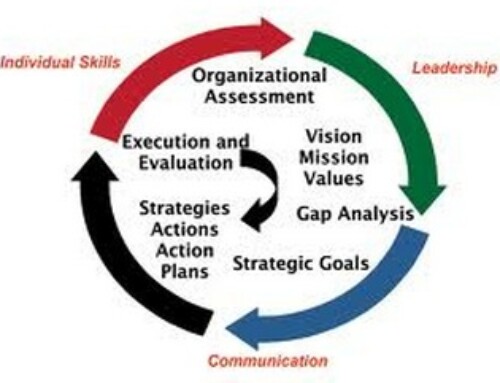 Years ago, I worked with Anne Ready, who founded Ready for Media, perhaps the best media training firm in Los Angeles. Working with Anne laid the foundation in my PR education early on when it came to media training. I have relied on her tools, tricks and tactics to help me through the years to teach CEOs how to prepare and be prepared when working with reporters.
Years ago, I worked with Anne Ready, who founded Ready for Media, perhaps the best media training firm in Los Angeles. Working with Anne laid the foundation in my PR education early on when it came to media training. I have relied on her tools, tricks and tactics to help me through the years to teach CEOs how to prepare and be prepared when working with reporters.
Having worked for some of the largest financial institutions in the world, I also have had the unique opportunity to interact with C-level (CEOs, COOs, Chairs, CMOs, CTOs, etc.) executives in preparing them for interviews with reporters since I was in my 20s.
What I have discovered throughout the decades is a pretty mixed bag: some executives are very good on stage making a presentation, but falter when you turn on the lights and a camera; others are shy and dread speaking with reporters; many are simply mediocre and some of those mistakenly think they are media rock stars, and that may be the most dangerous ones of all. Then there are the exceptions to the rule, the top executive who is a PR person’s dream, as they are polish, knowledgeable and authentic.
I have worked with folks who fit in every one of these categories, and what I have found is there are 5 common ways that CEOs fail when being interviewed by a reporter. Here’s my quick checklist of these mistakes and how to avoid them.
Forgetting the little things
The best top executives you want to serve, as your spokespersons, are the ones that want to be coached or at least understand they can benefit from professional coaching to get better. They don’t think they’re perfect.
Even the most polish CEO can forget the little things. Such as when they are talking about their company, they say “here” or “we” instead of the company name. The better sentence for “We believe in the power of our employees” is “At XYZ Corp, we believe in the power of our employees.” Working one’s company name naturally into the conversation embeds it into a quote and on radio, TV or in print, your audience is more likely to remember your firm and credit is assured.
Other little things that can be particularly troublesome – and very common in real estate: speaking in industry jargon or using acronyms. That’s not going to work for the reader or viewer and it’s going to turn off the reporter.
Perceived as arrogant
The nice thing about having a media trainer, like Anne Ready, is they can tell the emperor he has no clothes. It’s often very hard for a marketing, communications or PR executive inside a company to tell a top executive that they coming off as arrogant. CEOs are confident and sometimes with reporters, can quickly become defensive or combative when asked a tough question. They also can start talking more about themselves then their company or its employee teams, and that can be perceived as arrogant. Reports are likely to distrust what they perceive as arrogance.
With proper media training and the use of video, top executives can often finally see what others are seeing, and be taught how to channel their confidence and competence in a way that does not come off as being arrogant.
To tell the truth
This is a big one and a huge “don’t do this.” The most important thing about working with a reporter is building two-way trust. If you screw that up, there’s no return. But I have listened and watch some CEOs obfuscate their answers when asked a tough question worse than some presidential candidates.
Media training teaches that honesty always is the best policy. It also teaches that you don’t need to answer every question. Learning how to best handle both of these situations and not hurt one’s company is an art more than a science, but that’s precisely where media relations training becomes a highly valuable insurance policy.
Never sell, tell stories
The best spokespersons realize that what reporters are really looking for is a way to better tell a story. They love people who give them great quotes. But the truly best spokespersons in the executive ranks of a company are those who can put context around what their company, product or service is about through story telling.
Sharing a real world anecdote can be priceless in simplifying a complex issue or technology. Every company, product and service has a story and top executives can use the story telling process to drive home their messages. The problem is that many CEOs try to sell the reporter instead of trying to educate them. Remember, if you have a truly great company, product or service, the story should sell the reporter, reader and/or the viewer
Being prepared
This is the most common one and saved for last because it often creates a big challenge for anyone internally who is responsible for PR. Most reporters who end up writing or broadcasting something a CEO hates happens because somebody wasn’t prepared. Unfortunately when that person is the CEO, providing the proper preparation can be challenging, if not impossible, because of the dynamic of the media. Reporters are on deadline and executives are ridiculously busy. Those two things don’t go together well.
Media training shows how preparation is not only important before any significant interview, but it is vital. Understanding who the reporter is – their style, what they like to write about, their approach, their background, their experience, and their education – helps the PR practitioner better prepare the CEO and anticipate what’s coming. Talking to a reporter before hand – and NOT relying on email – is crucial for sizing up the situation and understanding the reporter’s angle, interest, type of questions and most importantly, their real deadline.
These are the teachings that media training can provide, adjusted to meet the needs of every top executive, whether they are about to speak to a reporter at a local trade publication or be interviewed on 60 minutes. Just about everyone and anyone can benefit from media training, and knowing where the landmines are located is just a start.
If you are interested in learning more about the media relations training that Kevin Hawkins and Steve Cook at WAV Group Communications provides – from a general presentation to a large audience to one-on-once C-level training, reach out to Kevin or Steve at kevin@wavgroup.com or steve@wavgroup.com.




